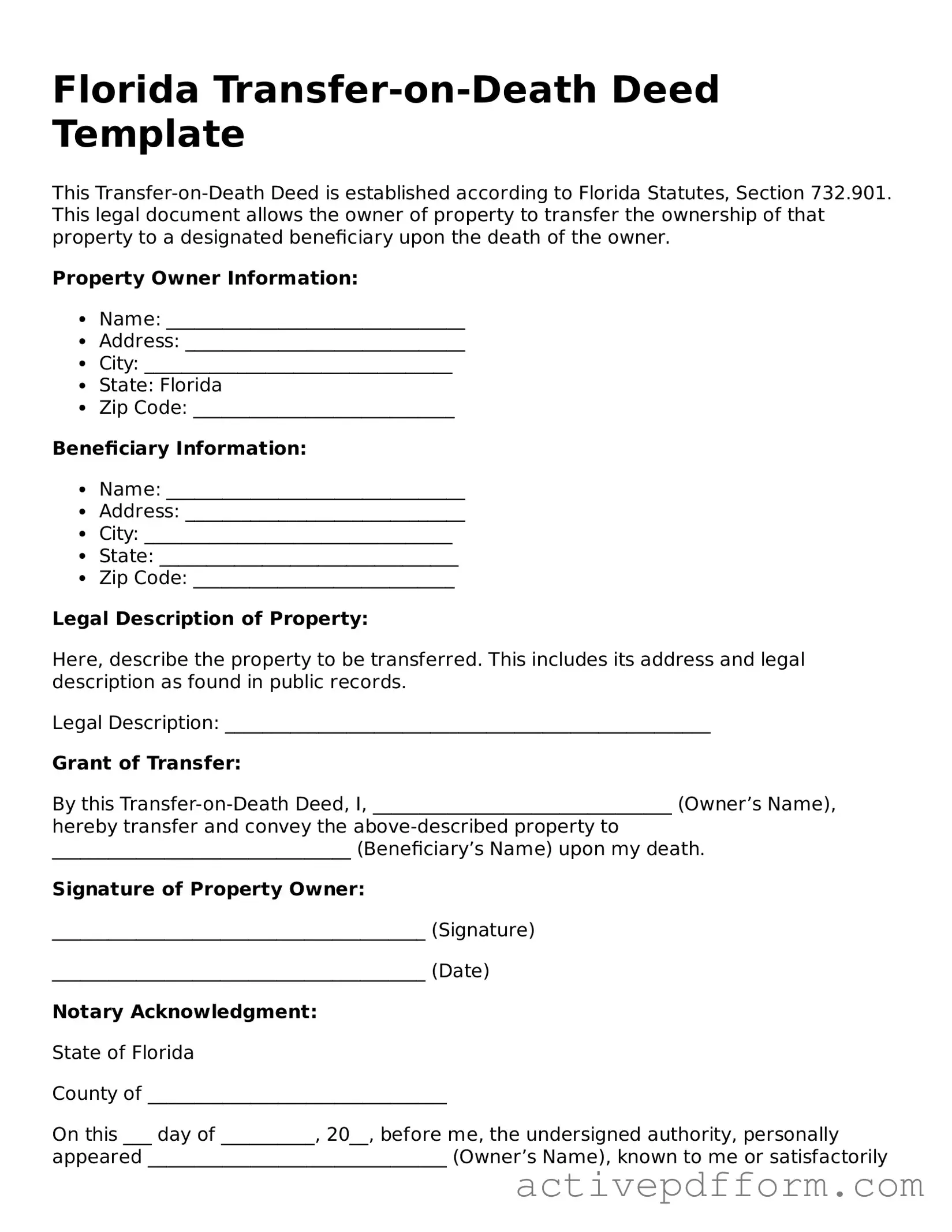What is a Transfer-on-Death Deed in Florida?
A Transfer-on-Death Deed (TODD) is a legal document that allows property owners in Florida to transfer real estate to a designated beneficiary upon their death. This form bypasses the probate process, enabling a smoother transition of property ownership without the need for court intervention.
Who can use a Transfer-on-Death Deed?
Any individual who owns real estate in Florida can utilize a Transfer-on-Death Deed. This includes homeowners, co-owners, and individuals holding property in a trust. However, it is essential that the property is not subject to any liens or encumbrances that could complicate the transfer.
How do I create a Transfer-on-Death Deed?
To create a Transfer-on-Death Deed, you must fill out the appropriate form, which includes details about the property, the owner, and the beneficiary. It is advisable to have the deed signed in the presence of a notary public and recorded with the county clerk's office where the property is located. This ensures the deed is legally recognized and enforceable.
Can I change or revoke a Transfer-on-Death Deed?
Yes, you can change or revoke a Transfer-on-Death Deed at any time before your death. To do so, you must execute a new deed or a formal revocation document. It is crucial to record any changes with the county clerk to ensure that the most current wishes are reflected in public records.
What happens if I do not designate a beneficiary?
If you do not designate a beneficiary in your Transfer-on-Death Deed, the property will not automatically transfer upon your death. Instead, it will become part of your estate and may be subject to probate, which can be a lengthy and costly process.
Are there any tax implications with a Transfer-on-Death Deed?
Generally, there are no immediate tax implications when using a Transfer-on-Death Deed. The property is not considered part of the deceased's estate for estate tax purposes. However, beneficiaries may be subject to capital gains tax when they sell the property, depending on the property's value at the time of transfer and their individual tax situations.
Can a Transfer-on-Death Deed be contested?
Yes, a Transfer-on-Death Deed can be contested, just like any other estate planning document. Common grounds for contesting a TODD may include claims of undue influence, lack of mental capacity, or improper execution of the deed. If a beneficiary or interested party believes there are valid reasons to challenge the deed, they may pursue legal action.
Is legal assistance necessary when creating a Transfer-on-Death Deed?
While it is not legally required to seek assistance, consulting with a legal professional can be beneficial. An attorney can help ensure that the deed is properly executed, complies with state laws, and aligns with your overall estate planning goals.
What types of property can be transferred using a Transfer-on-Death Deed?
In Florida, a Transfer-on-Death Deed can be used to transfer various types of real estate, including residential homes, vacant land, and commercial properties. However, it cannot be used for personal property, such as vehicles or bank accounts.
When does the Transfer-on-Death Deed take effect?
The Transfer-on-Death Deed takes effect only upon the death of the property owner. Until that time, the owner retains full control over the property and can sell, mortgage, or otherwise manage it as they see fit. The beneficiary has no rights to the property until the owner's passing.
